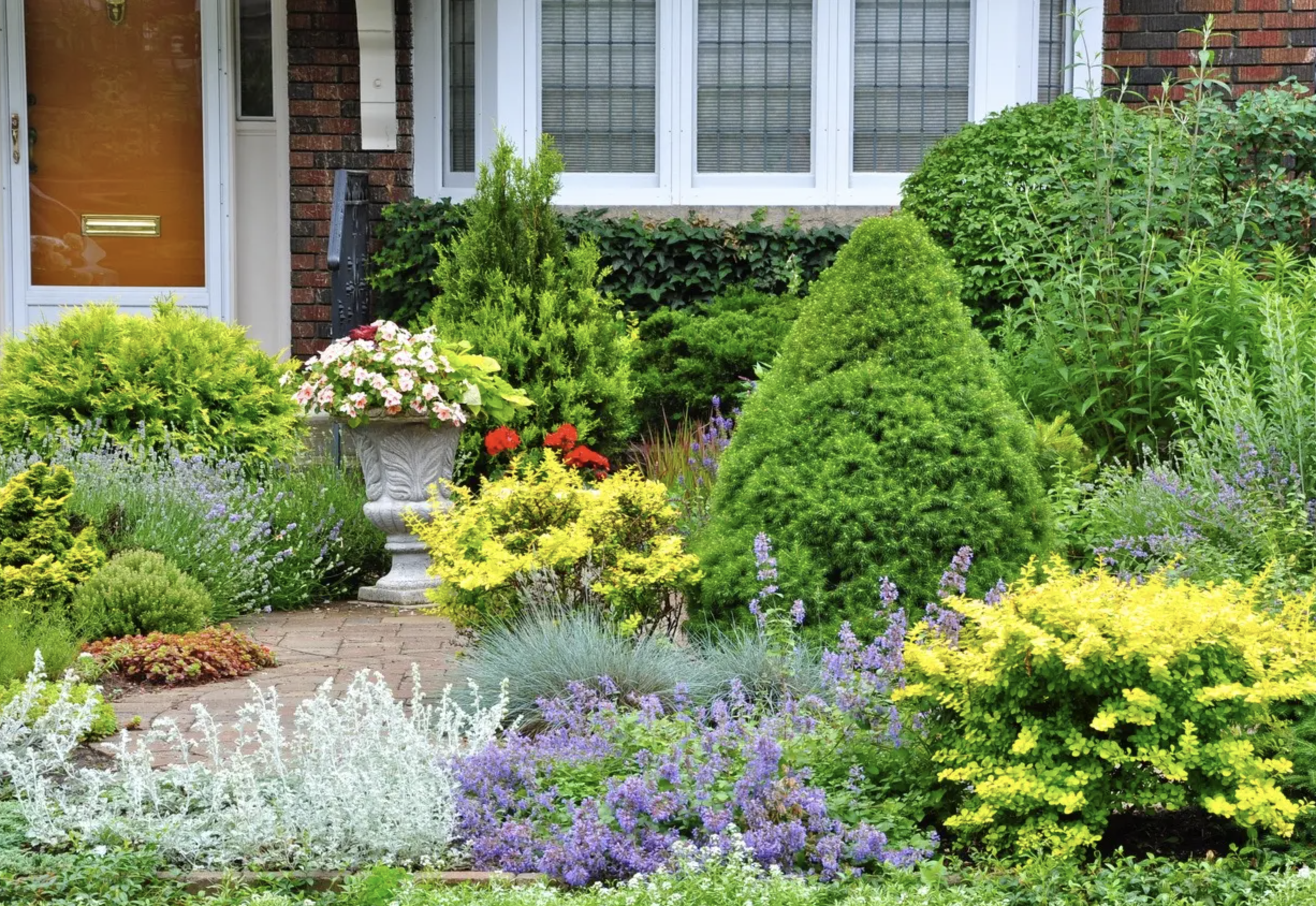
Written by s • The Paradise Garden
Developing and laying-out a garden can be difficult, and the results may not always be what you were looking for. Part of the job involves choosing different varieties of plants, but that can be difficult, so having an overriding principle in mind when choosing is very useful. Beyond different styles – formal, Asian, cottage, and so on – there is an interesting concept that can be a useful way of looking at your garden. This idea is called the Paradise Garden.
What makes planting a garden fundamentally different from decorating a room is this. Your furniture does not change color with the seasons, or shed its cushion covers with the onset of winter. Your tables do not begin as end-tables and develop into dining tables seating 12. Unwanted accessories do not spring up in your bookshelves. In our gardens all these things happen – leaves change color and fall to the ground, cute little plants become giant trees, and weeds grow. As well, we deliberately choose plants that have brief moments of spectacular flowering, followed by months of nothing much at all. Yet as humans we crave a certain permanence and structure to our surroundings, and avoid chaos and impermanence.
What is the Paradise Garden?
How do we reconcile these contradictory needs for constancy and change? This is where the idea of the Paradise Garden comes into play. It is really a very simple concept. If we want permanence and structure, then we need an easy rule to work with, that will create a stable garden, while leaving room for seasonal change, flowers, and plants that come up and then disappear again. The rule is very simple – make sure that two-thirds of the plants in your garden are evergreen. That’s it – very simple.
The basis of this rule is that evergreen plants remain relatively stable in appearance through the seasons, and they form permanent shapes that can often be enhanced by thoughtful pruning and trimming. With a core or backbone of these plants, which may or may not also flower and fruit, the more changeable plants, like deciduous bushes or flowering plants, can come and go, but the stable core will remain, creating a garden that, like Paradise, is permanent and forever, yet lively with seasonal change and bursts of color.
That basic two-thirds rule does not mean the number of plants, it means the space they take up, so we should really say that two-thirds of the space of your garden, both on the ground and in the air, should be filled with evergreen plants. After all, you might have 30 or 40 small shrubs and only 5 large trees, but the trees will take up more room than all the shrubs combined. Interestingly, that two-thirds figure, which is of course only an approximation, is not far from the classical ‘Golden Mean’, which is a ratio of 1 to 1.6, or roughly two-thirds. The Golden Mean has been held up for centuries as the ideal proportion for architecture and objects, so the Paradise Garden rule is perhaps another way of expressing the Golden Mean.
Making a Paradise Garden
The great appeal of this rule is its simplicity, but also how it can be applied to any style of garden at all. In a formal garden, a lot of the evergreen structure would be high or low hedges and clipped plants, while in an Asian garden it would be pine trees and clumps of bamboo. Whatever style you want, this rule can always be your guide.
The type of plants you use will also vary with your location. In colder areas a lot of the evergreens you use will be conifers – plants like Arborvitae, Pine or Spruce. In warmer places you might use Holly, Rhododendron and Boxwood. In the hottest parts of the country you would be using Palm trees and Citrus, or Olives and Italian Cypress where it is both hot and dry. Once you have established this core of permanent evergreens, then you can embellish it with anything you want. Add a deciduous tree or shrub with spectacular fall color. Plant Roses or Crape Myrtle. Add some spring bulbs or ornamental grasses. Instead of following some rigid design or list of plants, you can follow your whims and passions instead, confident that it will all work out in the end, with those evergreens giving permanence and the other material bringing change and season pleasures.
You will still need a basic layout of the areas of your garden, where pathways go, and basic structures. The placement of large trees needs careful consideration too, but when it comes to planting your beds, follow your eye and plant as you choose. Just remember to fill two-thirds of the space with something evergreen, and keep an eye on the final height of the plants, so that you don’t have small things hidden behind larger ones. Apply the simple Paradise Garden concept and everything will turn out fine.
If you doubt the power of this idea, look at some famous gardens, or ones you think are beautiful. The chances are good that if you analyze their structure you will see that about two-thirds of the space is taken up with permanent, evergreen planting, embellished with deciduous and seasonal material. The greatest gardeners build Paradise, even if they don’t always realize it.





